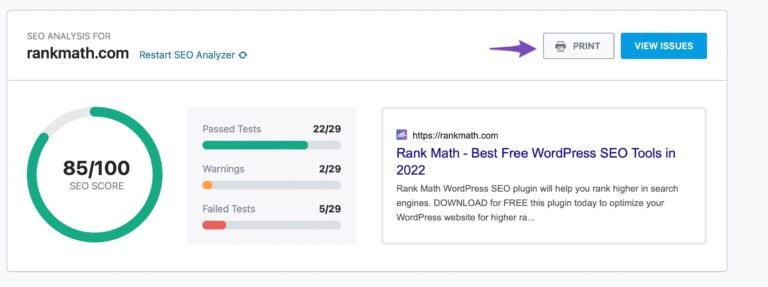Best for Slim SEO Tips for Content Creators: Boost Your Rankings
Creating high-quality content is just one part of the equation. Ensuring it’s discoverable is another.
That’s where SEO tips come in. Content creators need to optimize their work to reach a wider audience. Small tweaks can make a big difference in search engine rankings. Knowing the best SEO practices is crucial. It helps content stand out in a crowded digital landscape.
This blog will guide you through effective SEO tips. These tips are tailored for content creators aiming for slimmer, more impactful strategies. Learn how to enhance your content’s visibility and improve its searchability. Let’s dive into the essential SEO tips that can help your content shine.

Credit: www.instagram.com
Introduction To Slim Seo
SEO helps people find your content. It’s important for content creators. Slim SEO is a tool that makes SEO easy. It has simple features. These features are user-friendly. You don’t need to be an expert. Slim SEO does the work for you. It saves you time.
Importance Of Seo For Content Creators
SEO is crucial. It helps your content rank higher. More people can find your work. This means more traffic. More traffic means more success. Using SEO can make a big difference. It’s a key part of being a content creator.
Benefits Of Using Slim Seo
Slim SEO is easy to use. It has helpful features. These features improve your content. You don’t need special skills. Slim SEO saves you time. It’s a great tool for beginners. It helps your content rank higher. Higher ranks mean more visitors. More visitors help you grow your audience.
Keyword Research Strategies
Use tools like Google Keyword Planner or Ubersuggest. These tools help find popular search terms. Focus on low competition keywords. These are easier to rank for. Check the search volume too. High volume means more people search for it.
Long-tail keywords are phrases with more words. They are more specific. Less competition makes them easier to rank for. For example, “best shoes” is short. “Best running shoes for women” is long-tail. These phrases often have higher conversion rates.
On-page Optimization Techniques
Title tags are very important. They tell search engines about your page. Keep them under 60 characters. Make them clear and to the point. Use keywords in your title tags. Meta descriptions are also important. They are short summaries of your page. Keep them under 160 characters. Use keywords here too. This helps people find your page.
Use header tags to organize your content. H1 tags are for main titles. Use only one H1 tag per page. H2 tags are for subheadings. They help with structure. Use keywords in your header tags. This helps with SEO. It makes your content easy to read.

Credit: www.hostinger.com
Content Creation Tips
Engaging content grabs attention. Use simple, clear words. Short sentences work best. They are easy to read. Make your content fun. Ask questions to engage readers. Use stories to connect. Pictures help a lot. They make content lively. Use bold words for key points. This makes them stand out.
SEO helps your content get found. Use keywords wisely. Place them in your title and text. Use headings to organize. They guide readers. Short paragraphs are better. They are easy on the eyes. Lists are good too. They make points clear. Use alt text for images. This helps with SEO. Keep it simple. Stay consistent with your format.
Image Optimization
Optimizing images is key for improving SEO. Compress images to reduce load times. Add descriptive alt texts for better search engine visibility.
Alt Text And File Names
Use clear and short alt text for images. This helps search engines. Describe the image well. Use keywords if possible. Name your image files properly. Avoid using random letters or numbers. Use relevant keywords in file names. Keep file names short and simple. Example: “sunset-beach.jpg” is better than “IMG1234.jpg”.
Compressing Images
Large images slow down your website. Compress images before uploading. Use tools like TinyPNG or JPEG-Optimizer. Smaller images load faster. This improves user experience. Search engines prefer fast-loading sites. Keep image quality good. Do not over-compress. Aim for a balance of size and quality. Regularly check your site speed. Optimize images often.
Internal And External Linking
Linking internally and externally boosts your content’s visibility. It helps search engines understand your site better. Improve user experience by guiding readers to useful information.
Building Internal Links
Internal links help readers find more content on your site. These links connect related articles or pages. Search engines use them to understand your site’s structure. Use descriptive anchor text for these links. This means the linked text should tell what the link is about. Do not overuse internal links; it may look spammy. Aim for natural placement within your content.
Acquiring Quality Backlinks
Quality backlinks come from trusted websites. They show that your content is valuable. To get these links, create high-quality content that others want to share. Reach out to influential bloggers or sites in your niche. Offer to write guest posts for them. Make sure your content is unique and helpful. This increases the chances of getting backlinks. Avoid buying backlinks as it may harm your site’s reputation.
Monitoring And Analytics
Monitoring and analytics help content creators optimize their SEO strategy. They provide insights into keyword performance and audience engagement.
Tracking Seo Performance
To track your SEO performance, use analytics tools. They show which keywords bring traffic. This helps you see what works best. Check your website’s bounce rate. It shows if users stay or leave quickly. High bounce rate means content needs improvement. Look at your click-through rate (CTR). High CTR means good keywords and titles. See your site’s loading speed. Faster sites rank better. Find out which pages are most popular. Focus on improving those pages more. Regularly track your rankings. Know where you stand in search results. Always keep an eye on your organic traffic. It’s the best indicator of success. Using these tools helps you stay ahead in SEO.
Staying Updated With Seo Trends
Follow industry experts to stay updated on SEO trends. Subscribe to their newsletters. Read their blogs. Watch their videos. Join webinars and conferences. Use social media to connect. These experts share valuable insights. They help you understand new techniques. They explain complex changes in simple terms.
Search engines update their algorithms often. These changes affect your content ranking. Stay informed about these updates. Adjust your content strategy accordingly. Use reliable sources to track changes. Keep your content fresh. Make it relevant. Ensure it meets the latest guidelines. This helps maintain your visibility.
Common Seo Mistakes To Avoid
Keyword stuffing is a big mistake. It makes content hard to read. Search engines dislike it too. Use keywords naturally. Do not repeat them too much. Write for people, not just for search engines. Quality content helps more than too many keywords.
Many users browse on their phones. Content must be mobile-friendly. A site not optimized for mobile loses visitors. It affects SEO rankings. Make sure your site looks good on all devices. Test your site on different screens. Mobile optimization is crucial for success.

Credit: www.youtube.com
Frequently Asked Questions
What Are The Top Seo Tips For Content Creators?
Focus on keyword research, write quality content, and optimize meta tags. Use alt text for images and ensure mobile-friendliness.
How Can I Improve My Content’s Readability?
Use short sentences and paragraphs. Include headings and bullet points. Write in simple language for easy understanding.
Why Is Mobile-friendliness Important For Seo?
Search engines prioritize mobile-friendly websites. Many users browse on mobile devices, so it improves user experience and rankings.
Conclusion
Creating SEO-friendly content doesn’t have to be hard. Use these tips to improve your writing. Keep sentences short and clear. Focus on your audience’s needs. Remember, keywords are important but don’t overdo them. Stay consistent with your posting schedule. Quality content keeps your readers coming back.
Always proofread before publishing. Small changes can make a big difference. Happy writing!





